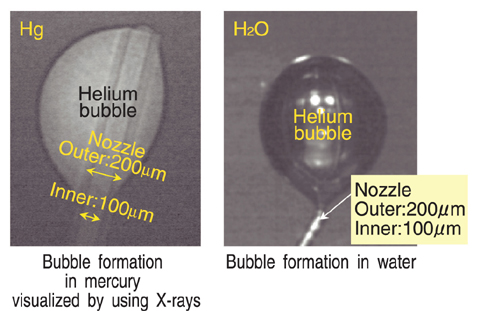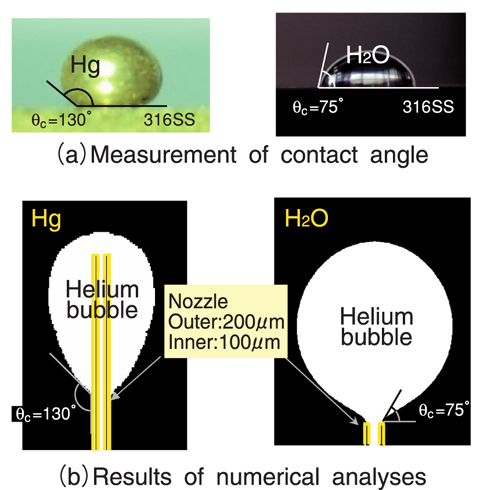
Fig.14-9 Visualization of Bubble Formation Behavior

Fig.14-10 Measurement of Wettability and Prediction of Bubble Formation Behavior by Numerical analyses
In the materials and life science experimental facility of "J-PARC", innovative sciences in the materials and life science fields will be developed by using high intensity neutrons from a MW-class spallation neutron source. Liquid mercury is used as the target material to produce neutrons by the spallation reaction from a viewpoint of heat removal. However, pitting damage degrades the target structural material, which is caused by pressure waves generated in rapid heating while the proton beam bombards the mercury. To improve the endurance of the mercury target and to use it under a high power proton beam, it is essential to reduce the pressure waves which cause the pitting damage. We aimed for a technique that would reduce the pressure wave by injecting helium gas bubbles into the mercury, because the gas bubbles act as a cushion.
It was predicted that the pressure wave would be reduced by half by injecting 0.1 Vol.% of tiny bubbles of 100 μm in diameter (microbubbles). The reduction mechanism of the pitting damage by the injection of microbubbles is being considered in corporation with CCSE.
To understand the bubble formation behavior in mercury and to develop the technique for injecting the microbubbles into mercury, we tried visualizing bubble formation behavior in opaque mercury by using X-rays. Although it was difficult to visualize the behavior clearly because the absorption rate of the X-rays is high in mercury, the visualization of the bubble formation behavior was successful by increasing the transmission of X-rays using high intensity X-rays in "SPring-8",and optimizing the thickness of the mercury. Fig.14-9 shows the bubble formation behavior while helium gas was injected into stagnant mercury from a narrow nozzle (inner diameter: 100 μm, outer diameter: 200 μm) when compared with the case in water. In water, the bubble formed from the tip of the nozzle, but in mercury, the helium gas flows to the boundary between the mercury and the nozzle wall because of the poor wettability of the mercury as shown in Fig.14-10 (a), and the bubble formed around the tip of the nozzle.
The numerical analysis became a useful tool to predict the bubble formation behavior in opaque mercury. It was confirmed that the numerical analysis represented the visualized results by considering contact angle, which is a parameter to express the wettability as shown in Fig.14-10.
Hereafter, a bubble injecting device to apply the practical mercury target will be considered to improve the endurance of the mercury target.